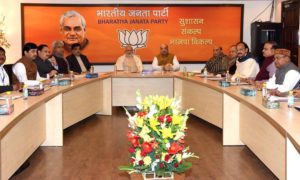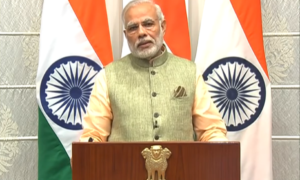Reforms, Governance and Modi administration

Reforms processes require astute statesmanship, matured political outlook and efficient administrative skills.

The Prime Minister, Shri Narendra Modi chairing eleventh interaction through PRAGATI – the ICT-based, multi-modal platform for Pro-Active Governance and Timely Implementation, in New Delhi on March 23, 2016.
The year 1991 has been one of the most significant years in the history of the India.
That year, India made yet another ‘tryst with destiny’ by unleashing unprecedented economic reforms. It heralded the metamorphosis of the nature and character of the country.
Mapping the trajectory of India vis-à-vis the process of both economic and administrative reforms over the years, it can be said that despite being a democracy, the country has made a giant leap forward towards taking the benefits of good governance to the door-step of common citizens.
The economic reforms, which started in 1991, has already reached its second generation incarnation and the administrative reforms have entered into more pragmatic formats with new beginnings in 2005 through the Second Administrative Reforms Commission.
Prime Minister Narendra Modi’s call for ‘minimum government, maximum governance’ has become the buzzword for revitalizing the wheel of governance with efficient and effective bureaucracy along with the other wheel of economic reforms.
Modi’s concern was centrally on the slow response to the complaints by the common men when he was speaking to the bureaucrats at the meeting on PRAGATI – Pro Active Governance and Timely Implementation – just a day before the Holi celebrations.
Among other policy measures, the Prime Minister asked the administration to redress the citizens’ grievances within two months and very significantly suggested to improve the handling redressal process within a stipulated period of one month.
These two bold steps are pragmatic and result oriented as well and completely in synchronization of the suggestions ‘to re-engineering processes to make governance process citizen-centric’ as outlined in
the 12th Report of the Second Administrative Reforms Commission.
The Modi Government certainly faces a herculean task in taking forward both the economic and administrative reforms with faster acceleration.
Reforms processes require astute statesmanship, matured political outlook and efficient administrative skills.
The government’s few recent decisions underline the unflinching commitment towards carrying forward the reforms at both economic and administrative fronts and delivering the benefits to the citizens.
The creation of NITI Aayog (National Institution for Transforming India) on the rubrics of the erstwhile Planning Commission is a pointer towards the renewed emphasis of the central government on improving efficiency.
The NITI Aayog‘s prescriptions are wide ranging which includes the much talked about NIYATAM – the acronym for NITI Initiative to Yield Aspirational Targets and Actionable Means.
In this direction, the UPA Government has already moved ahead with a proposal to rationalize the number of various schemes and downsizing the administrative complexities by restricting the number of ministries to 15 percent of the size of a legislative body.
The dynamics in the process of governance has thrown up the biggest challenge for the Modi administration in terms of meeting the great and ever rising expectations of citizens through a lean format of government.
The solution in this direction certainly lies in quick adoption and implementation of technology which must precede the re-engineering of processes.
This can usher in the citizen centric governance in an effective way with innovations in governance. The rescuing of common citizens from the myriad structures of government may be on the top of agenda of Modi’s reforms initiatives.
In this context, the case of Britain emerges as more relevant, appropriate and noteworthy.
Few years ago British Prime Minister David Cameron had conceptualized ‘the golden thread’ while in opposition in 2009, which included the presence of good governance, public service delivery and a rule of law among other things.
Cameron also put forward the case of citizen centric and pro-active governance in a highly acclaimed lecture entitled ‘Next age of government’.
Both the concepts have become the ‘mantra’ for putting the citizens at the centre of governance process at least in all democratic countries. India should also warm up to these ideas with customized policy initiatives.

The author is a policy analyst and can be contacted at [email protected]












































